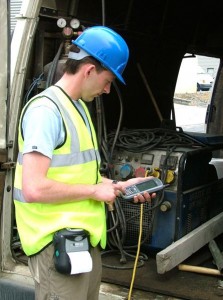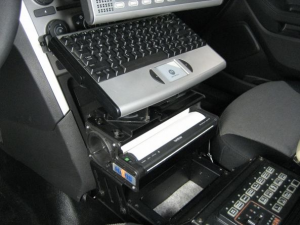 Sadly, this will be the last episode of my printer series. The Laser Printer will not Strike Back. There will be no Return of the Inkjet. It would be a tidy wrap up, but I don’t know much about laser or inkjet printers, so my saga ends here. I’ll leave those chapters for another guy. J.J. Abrams, maybe.
Sadly, this will be the last episode of my printer series. The Laser Printer will not Strike Back. There will be no Return of the Inkjet. It would be a tidy wrap up, but I don’t know much about laser or inkjet printers, so my saga ends here. I’ll leave those chapters for another guy. J.J. Abrams, maybe.
Anyway, on to mobile printers. As always, a lot to cover. I’ll try to be brief, but all I can do is try. What do you need to consider when planning a mobile printer project?
- Interface. Yes, again with the interface. In the case of mobile printing, wireless becomes the preferred method in most scenarios, in the form of Bluetooth and WiFi. Bluetooth for print jobs coming directly from a mobile computer and WiFi for “inside the four walls” applications when print jobs originate or are verified and authorized from within a centralized system. Wireless mobile printers still offer a physical port for direct communication and are commonly used for configuration or programming purposes, so do pick up a USB or serial cable for that purpose. Wired communication is also usually preferred for vehicle mounted mobile printing.
- Thermal Print Method. Mobile printing is an almost exclusive domain of direct thermal. There are some mobile printing applications that require thermal transfer printing, and a few printers that support it but it’s generally preferable to eliminate the ribbon and extra bulk and weight that accompany it for mobile. There are inkjets available that are marketed and sometimes even used as mobile printers. My personal opinion is that they’re more accurately described as portable than mobile.
 Media Type and Size. What do you need to print? Full sheet 8.5″ x 11″ traffic citations or 4″ x 2″ adhesive labels? Maybe you need a 2″ receipt printer. You might even need a mobile RFID printer. All of these are available but your requirements will narrow the list of options fairly rapidly.Our only full sheet thermal printer is the Brother PocketJet that we most commonly sell for installation in police patrol vehicles. Smaller format printers are available in 4″, 3″ and 2″ sizes from Zebra, Datamax-O’Neil, Brother Mobile Solutions and Star Micronics. Some will only handle thermal paper (usually for receipts) and some will handle paper or adhesive labels. Most mobile label printers require labels that are die cut from adhesive material on a poly liner but some support linerless labels that are wound onto themselves instead of a liner.
Media Type and Size. What do you need to print? Full sheet 8.5″ x 11″ traffic citations or 4″ x 2″ adhesive labels? Maybe you need a 2″ receipt printer. You might even need a mobile RFID printer. All of these are available but your requirements will narrow the list of options fairly rapidly.Our only full sheet thermal printer is the Brother PocketJet that we most commonly sell for installation in police patrol vehicles. Smaller format printers are available in 4″, 3″ and 2″ sizes from Zebra, Datamax-O’Neil, Brother Mobile Solutions and Star Micronics. Some will only handle thermal paper (usually for receipts) and some will handle paper or adhesive labels. Most mobile label printers require labels that are die cut from adhesive material on a poly liner but some support linerless labels that are wound onto themselves instead of a liner.- Vehicle Mobile or Carry Mobile? Your use case scenario affects a few things. If your printer is going to be mounted in an automobile or on a lift truck, you’re going to need a mounting solution. An OEM mount may suit your needs or you may be better served by a third party mount like Havis or LEM Solutions. If your users are going to be carrying a printer, consider how they’re going to wear it. It could be on their belt or on a shoulder strap. Power is another consideration here. Vehicle mobile applications tend to favor using vehicle power over battery power. Carried mobile requires batteries, so you have to consider capacity and charging needs.
Summary: There’s a lot to consider when you’re the one tasked with implementing a mobile printing project. Experience goes a long way. L-Tron is always happy to consult and offer demo equipment for qualified projects. We have partnerships with all of the manufacturers linked in this post and offer everything from simple hardware sales to integration and implementation services. As always, we encourage you to contact us for your mobile printing and computing needs.













